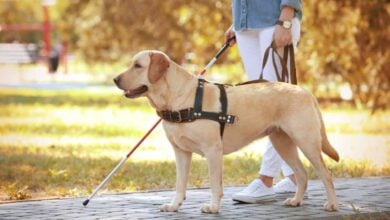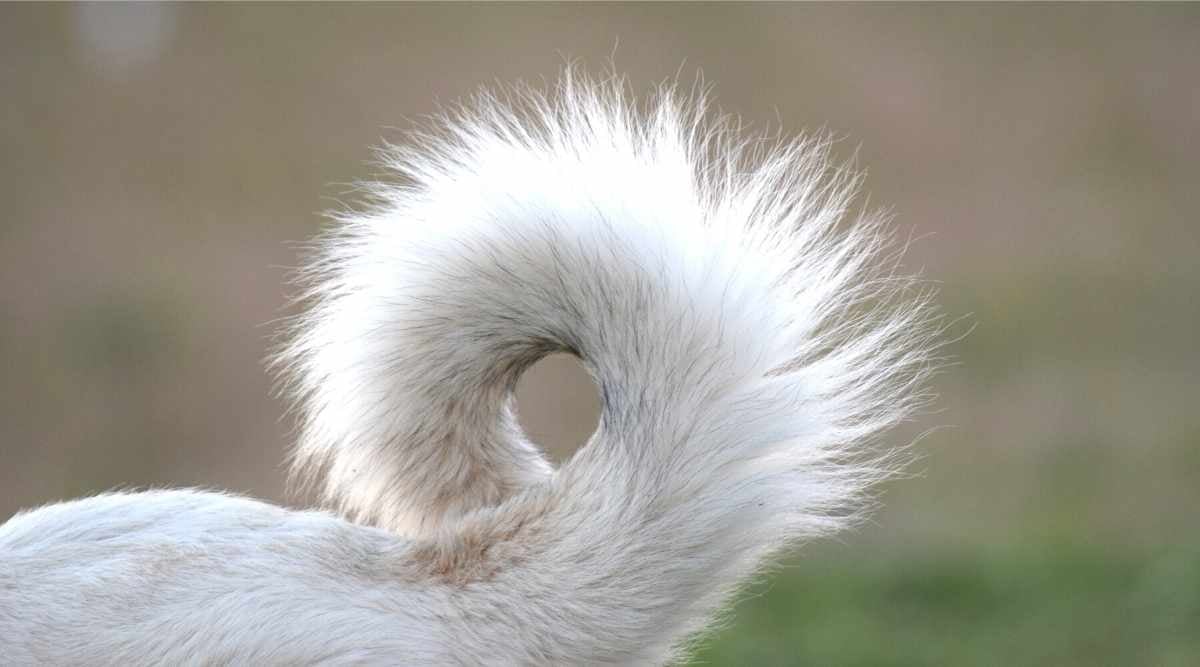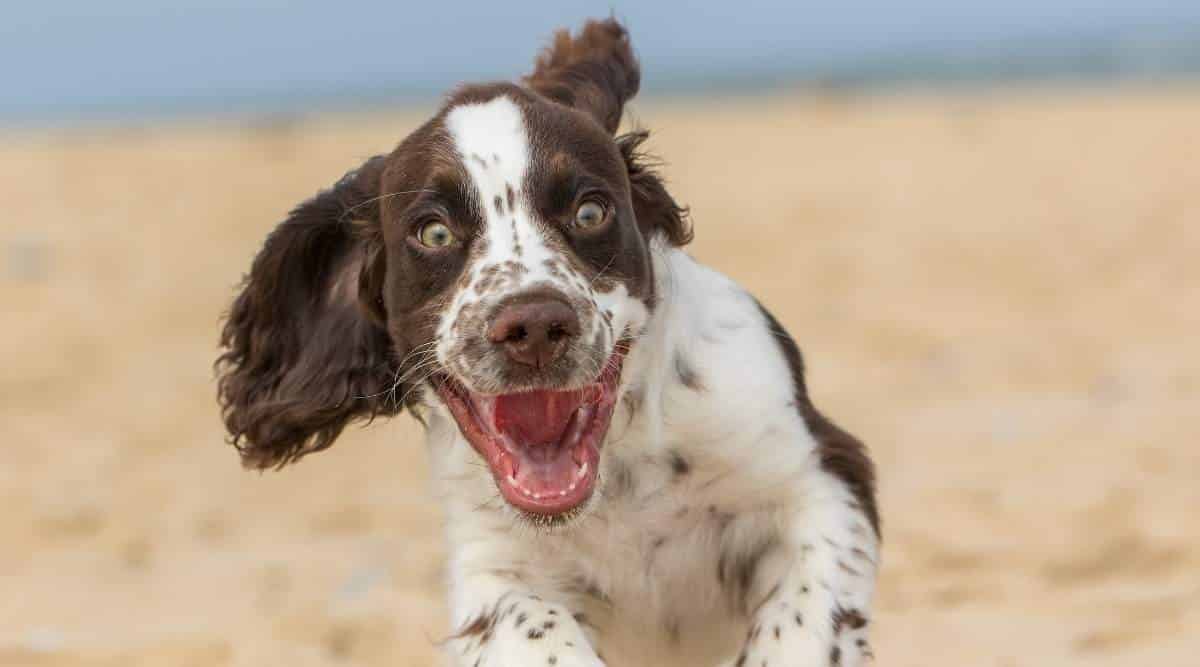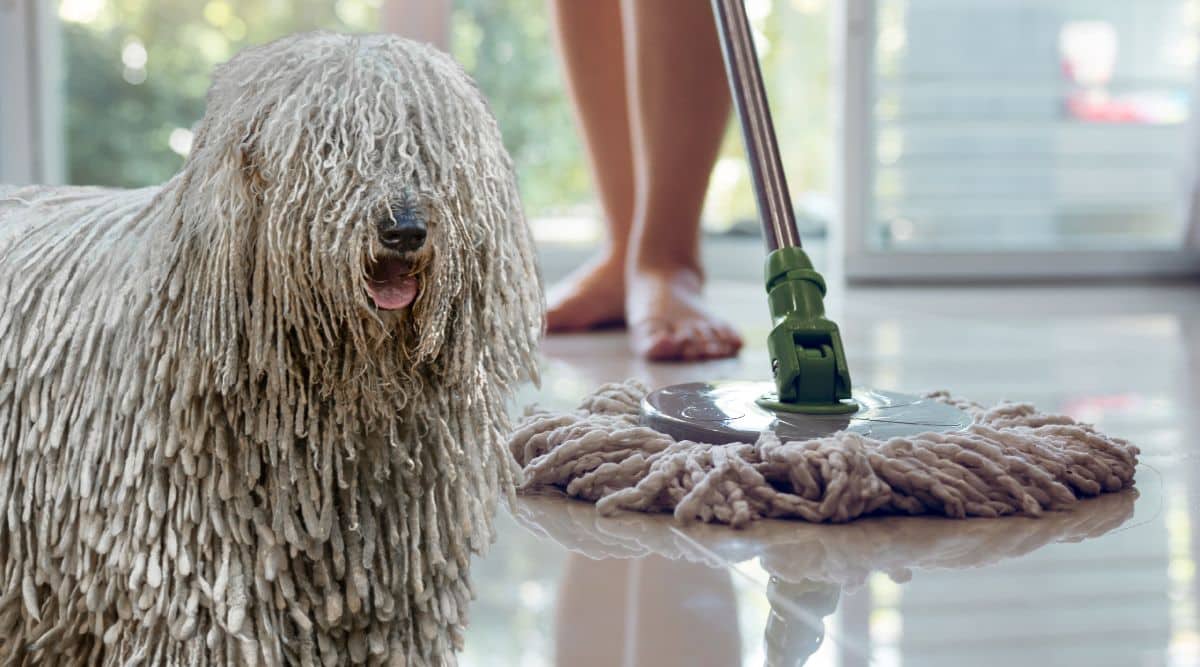Bouviers des Flandres Information: Breed Facts, Traits & More
When you purchase through links on our site, we may earn a commission. Here’s how it works.
The Bouvier des Flandres is a mighty pooch, best known for its incredible herding abilities and thick, shaggy coat. But they are much more than just versatile working dogs. These guys have a huge heart and love nothing more than feeling like an integral part of their human family.
But fear not because here in this guide, we will take you through everything you need to know. The good, the bad, and the ugly (not that there’s a lot of bad and definitely no ugliness here!) It’s only bad if you are looking for a small, extremely clean, and totally obedient pooch – because they are none of these traits!
Sounds like the doggo dream, right? Well, there are a few things that you need to know about them before welcoming one into your life. So, let’s get to it and round up all the facts about this wonderful cow herder.
Table of Contents
History
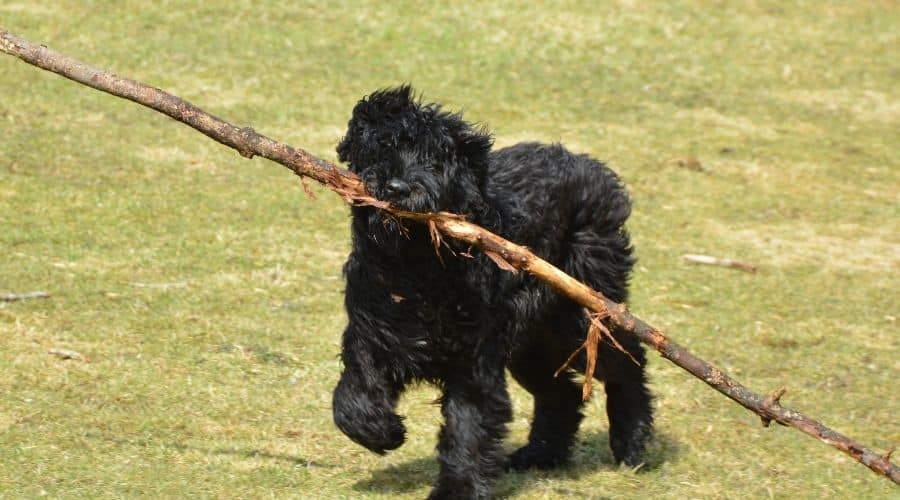
The Bouvier des Flandres is from the European area of Flanders. Back in the day, this region covered parts of modern-day Belgium, France, and the Netherlands. France and Belgium still claim it to be their native breed. The name roughly translates to ‘cowherd of Flandres.’ There were many varieties of these dogs, but this guy is the last to exist in recognizable numbers.
The Bouvier breed dates back to medieval times, and their primary role was to move cattle around the fields and from farm to market. However, farmers wanted a versatile farm dog, capable of everything except milking the cows, although they’d probably happily give that a go too!
The 20th century saw a worldwide popularity boost for this working dog breed. But sadly, the World Wars almost destroyed their native lands. Farmers were displaced, and the breed nearly became extinct. Thankfully, Belgian soldiers employed the remaining specimens in military, police, and other assistance roles. Rumor has it they were particularly skilled at locating ammunition and mines.
It is not known exactly when this dog came to America. Still, we know that European expatriates helped stabilize the breed here. The American Kennel Club (AKC) entered them into the studbook in 1931, and the American Bouvier des Flandres Club was established in 1963. The Bouvier is a relatively rare breed today. They typically find themselves between the 80th and 90th most popular dog breed out of 200.
Temperament
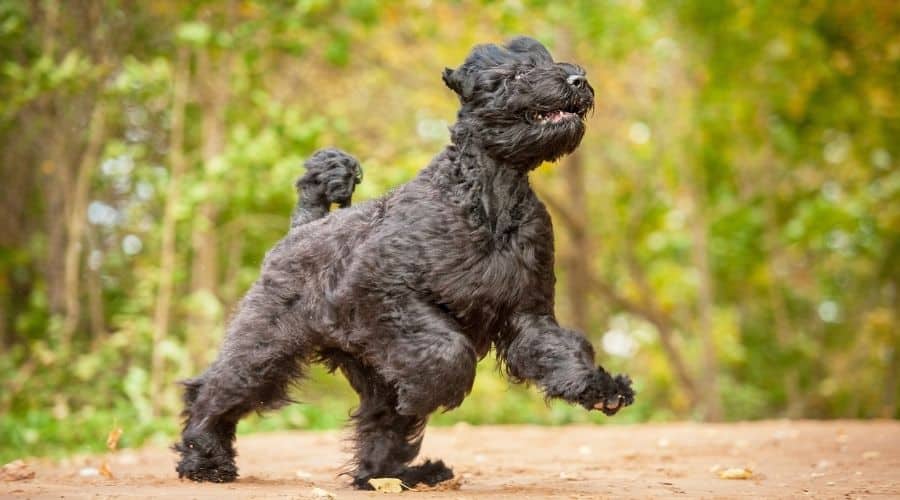
Like many large herding breeds, Bouviers des Flandres are courageous and protective pups. Although they are not aggressive without cause, they will protect their family with everything they’ve got. This is great if you are looking for a family guardian. Not so great if you are seeking a more docile pooch with no protective streaks. They are aloof with strangers and will keep an eye on them from the sidelines.
Like many hardworking, protective breeds, they are also headstrong characters. This is fine for those with previous doggy experience. But first-time dog owners might find this canine too challenging to handle. We’ll discuss tips for managing them in the training section, but know that this guy is charmingly stubborn.
When trained well, they are sweet and affectionate dogs with their family. They love a cuddle after a long day at work! And they make fantastic hot water bottles thanks to their burly muscles and warm coat. This huge pup is not a lap dog in any way, but they will make room on the sofa for themselves. Get ready for dead legs and a whole lot of doggy love!
Despite being high-energy working dogs, they are well-balanced in the home. Although they’ll be super excited and bouncy to see you when you return home, they’ll soon settle to well-behaved dogs. This is great for families looking for the best of both worlds. Excitable outdoors but calm in the home. They are also known for picking up on human emotion and supplying happiness when you need it most. Man’s best friend has never been more faithful!
Size & Appearance
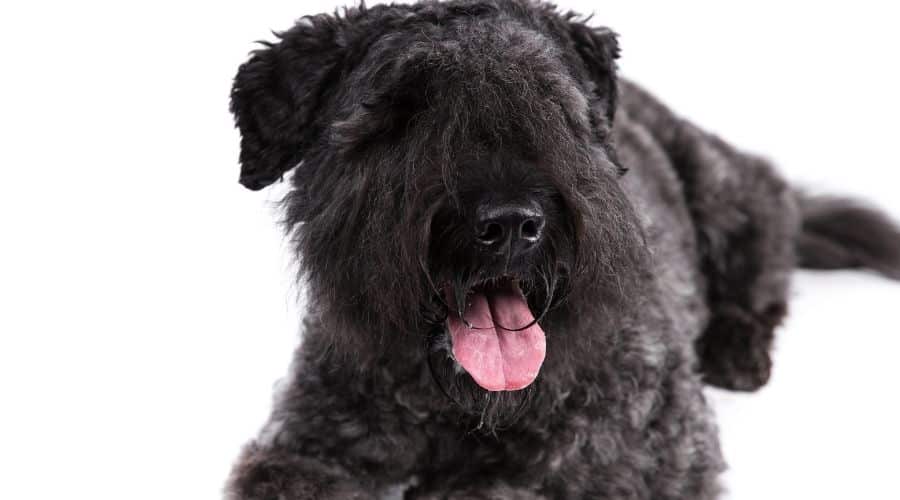
The Bouvier des Flandres is a large to sometimes giant-sized dog breed, so we hope you have room! Males are usually the larger of the sexes. The breed should weigh between 70 and 110 pounds and measure between 23.5 to 27.5 inches, from paw to shoulder. Overall, these fluffy pooches are described as powerfully built with a rugged appearance.
With their solid and thick neck, they carry their head with pride. Their ears are placed high on their head, which adds to their alert expression. They are commonly confused with the slightly more popular Giant Schnauzer. Their tails are naturally long and curl up towards the sky, although working and show dogs will have their tails docked.
Speaking of show dogs, if you want to show your pup in the show ring, they must conform to the Bouvier des Flandres breed standard rules. But the he shouldn’t be judged solely on his looks; competitions will also judge on nature and working ability. If you are just looking for a family pet, slight deviations from the book do not matter.
Coat & Colors
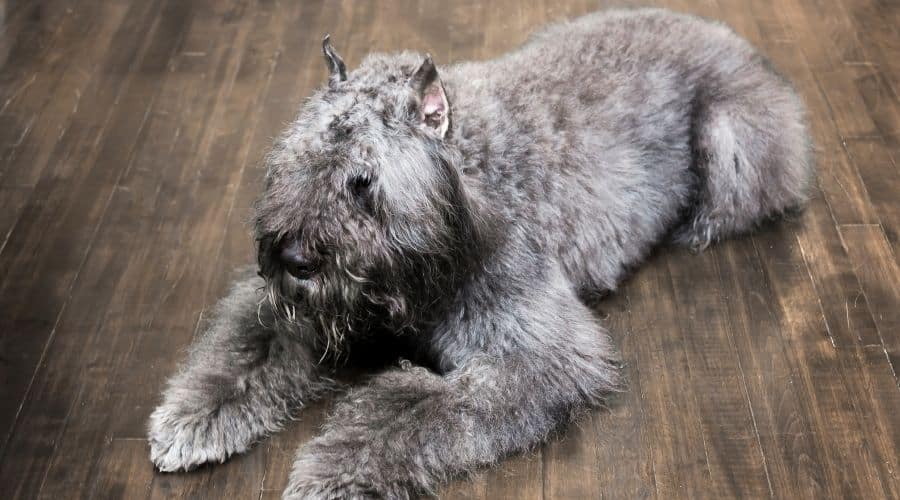
The Bouvier’s outer coat is rough and harsh to the touch, and the undercoat is soft, fine, and dense. Together the layers work to keep them protected in the harshest climates. The length of the coat should be around 2 ½ inches. The hair on the beard, mustache, and eyebrows should be longer than the rest of the face.
While always a dark-colored dog, this breed can sport shades such as fawn, black, salt and pepper, gray, and brindle. A small white star is allowed on the chest. If you want to show your pooch in the ring, chocolate, white, or multicolored will be penalized. You also need to be sure to avoid over-trimming or ruining the rugged natural look, which we’ll discuss in the grooming section.
Exercise Requirements
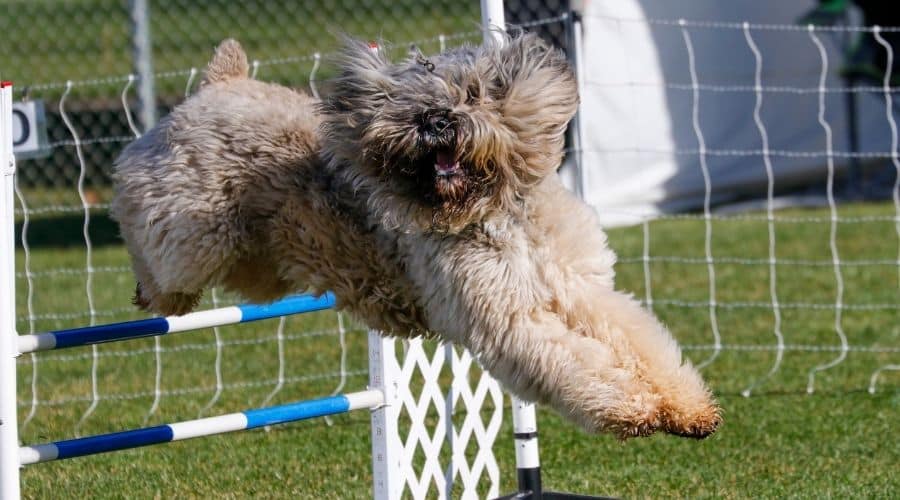
Whether it’s herding flocks or pulling carts, they aren’t too fussed. But this is not always possible or required. Instead, they’ll need to be exercised between 60 to 90 minutes every day. Remember that a bored working breed is destructive and naughty. So you need to be sure that your lifestyle will allow you to guarantee this high level of exercise.
They also need mental stimulation during the day in the form of interactive playtime and solo brain games. Bouviers love to run after things, so playing fetch is a great way to burn energy in the yard. They are also a huge fan of treats, so treat-dispensing toys are a great way to occupy their mind.
This dog should always be on a leash in public. Not because they won’t come back, but because they will try to herd everything in sight. Whether it’s a solo jogger, a team playing soccer, or a fast-moving car, they’ll give it a go. So for everyone’s sanity and your pup’s safety, please keep them under control.
Living Conditions
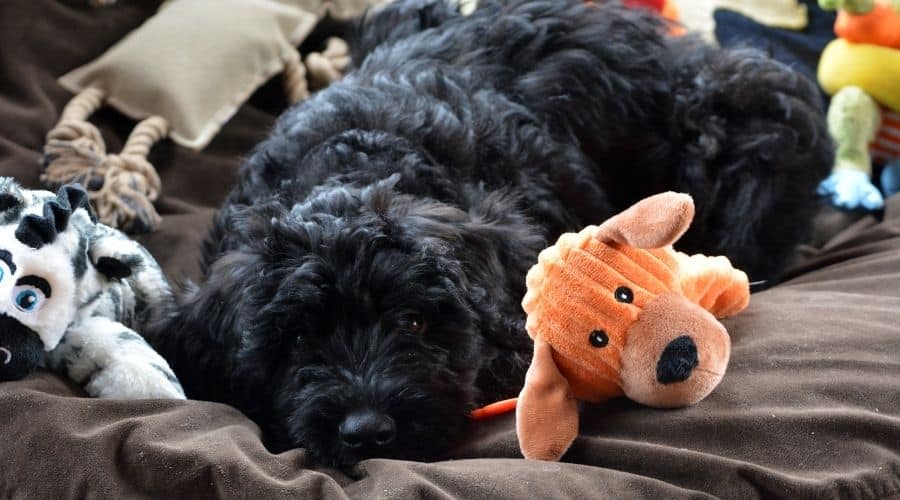
There’s no doubt about it; this is a huge dog. But it surprises many people to learn that they can live in a small home or apartment. They’ll do just as well in a larger home, and this outdoorsy guy would be really grateful for an outdoor space. But with adequate exercise, it’s not a necessity.
Your dog’s outdoor space needs to be a private yard rather than a communal area because of this breed’s protective and aloof nature. Plus, you need to ensure he is contained, so he doesn’t run into traffic in an attempt to herd cars or the delivery guy.
The Bouvier would prefer their family to be at home most of the time. Although he isn’t an overly anxious dog, he is much happier in the company of their family. Their family can be any shape or size: a young couple, retired people, or a family with younger children. The dog can be huge, so there is a chance of an accidental bump. But with supervision, this breed is an excellent match for kids due to their docile nature.
They also do well with other household pets if they are socialized at a young age. Living with another dog is a great way to burn energy in the yard when the humans are busy. However, as herding dogs, they may try to herd younger children and smaller pets. This is something that needs to be trained out of them, which we’ll discuss next.
Training
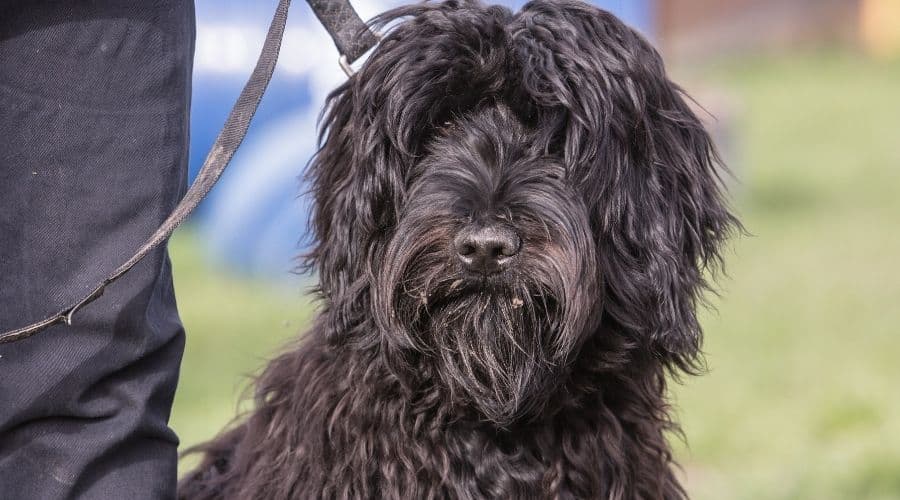
While this canine is intelligent, they can also be a headstrong and seek dominance, making training tricky for those without previous doggy experience. For this reason, only knowledgeable families should apply for this doggo. Be consistent with your training and never give in to their sweet puppy dog eyes!
To overcome their potentially dominant personality, you need to begin training right away. Everyone in the house needs to be on board with the training, even the kids. This will also help with preventing herding behavior towards them because they’ll see them as leaders. Be sure to research how to prevent herding behavior in the home. If you find your pup is herding, they likely need more exercise and stimulation.
Positive reinforcement training is the most effective training method. It also ensures that there is something in it for your dog. Toys to chase, high squeaky praise, and yummy treats will all work, so be sure to use them to your advantage when training.
The Bouvier des Flandres also needs early socialization if you want him to transform into a polite pooch. Otherwise, he’ll become dominant, overprotective, and a royal pain in the butt. Working with a reputable breeder is important because they will begin the process. Still, it’ll be down to you to continue the good work. Mix them with as many other dogs, humans, and new experiences as possible to increase their confidence and good manners.
Finally, you need to invest time and effort into leash training. Since you should always keep this humongous and strong dog on a leash, it is crucial to train them to walk with you politely. If they can pull carts full of dairy, pulling you over will be no problem at all! Use a no-pull dog harness with a front clip to give you more control.
Health

Like all purebred dogs, Bouvier des Flandres are prone to their fair share of genetically inherited health concerns. And like many other large to giant-sized dogs, you can also expect a shorter lifespan than smaller dogs. Keep them as healthy as you can by keeping them fit with regular exercise and keep up to date with health checks. Here are some of the most common health concerns to consider.
Hip & Elbow Dysplasia
Joint dysplasia is common in large dog breeds. Not only are they at risk of inheriting poor hips from their parents. But the rapid growth of their skeleton during puppyhood adds to the risk. Symptoms include an irregular gait and struggling to climb, sit, or stand. Always ask your breeder for their parent’s hip scores.
Eye Conditions
There are several eye conditions found in this breed that you need to research. The most common are cataracts, glaucoma, entropion, and ectropion. All health concerns need veterinary action to prevent severe damage or permanent vision loss. In addition to the apparent rubbing and redness, other symptoms might include a cloudy appearance and light sensitivity.
Cardiac Concerns
Many large dog breeds are at risk of cardiac problems. The most common in the Bouvier bloodline is subvalvular aortic stenosis. This occurs when the connection between the left ventricle and the aorta is abnormally narrow—leading to extra strain, resulting in heart failure. Symptoms include exercise intolerance, lethargy, coughing, rapid breathing, and fainting.
Hormonal Conditions
You should be aware of three primary hormonal concerns. The first is hypothyroidism, which is a disorder of the thyroid gland. This can be responsible for other health concerns such as epilepsy and alopecia. Cushing’s disease is another condition where the adrenal gland causes the excess production of cortisol. Finally, Addison’s disease causes the insufficient production of adrenal hormones. All can be managed with medication when diagnosed, but sadly it can lead to shock and sudden death if left untreated. Be vigilant of symptoms such as excessive drinking, urination, lethargy, and weight gain.
Nutrition
These pups typically consume between three and five cups of high-quality nutrition every day. This will depend on many factors, such as their size, age, and lifestyle. The breed has a healthy appetite, so be sure not to overfeed them. Always feed them an age-specific kibble to meet their nutritional needs. This is especially important during the developmental stage as it will help to control their rapid bone growth.
Like many other large dog breeds, the Bouvier is prone to a serious condition known as bloat. It’s unknown exactly what causes it, but eating large meals immediately before or after exercise can trigger it. It is a life-threatening condition that needs immediate veterinary attention. So, split the daily food allowance into several sittings to allow time to digest.
Grooming
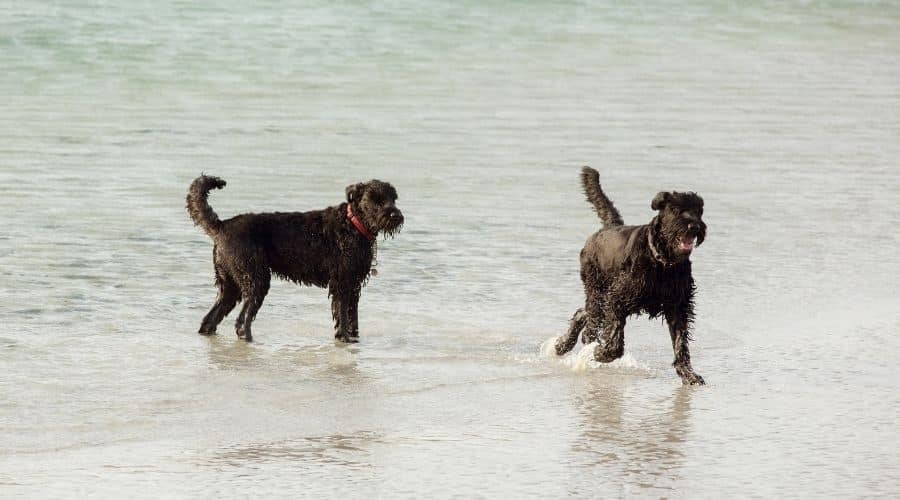
As you might have guessed, it takes a lot of elbow grease to keep the coat in good condition. So you either need a lot of time and preferably a walk-in shower or the financial resources to pay for regular professional grooming. Either way, this is not something that everyone can offer.
Traditionally, you shouldn’t just cut the Bouvier’s hair. Otherwise, the harsh feel of the coat will become silky over time, effectively changing the nature of this unique fur. A grooming technique called ‘hand stripping’ is preferred. Hand stripping is the only option for those who want to show their dogs in the show ring or keep them working in harsh climates.
They don’t shed much, but any discarded hair often gets caught in his harsh outer coat. You’ll need to brush your pooch at least twice a week with a slicker or pin brush. They’ll need bathing once every six to eight weeks to keep their shaggy coat looking (and smelling!) its best. To keep periodontal diseases at bay, you will also need to brush your canine’s teeth at least twice a week.
The Bouvier’s nickname in the Netherlands is Vuilbaard, which translates to ‘dirty beard.’ This is because when they eat and drink, their long facial hair becomes wet and dirty, which you’ll need to wipe after every meal. And in reality, it isn’t just the beard that becomes dirty! His coat acts as a mop and will hold onto dirt, debris, and moisture. And rumor has it that their flatulence is something else! So, if you’re after a clean, fart-free home, this breed is not your best choice.
Breeders & Puppy Costs
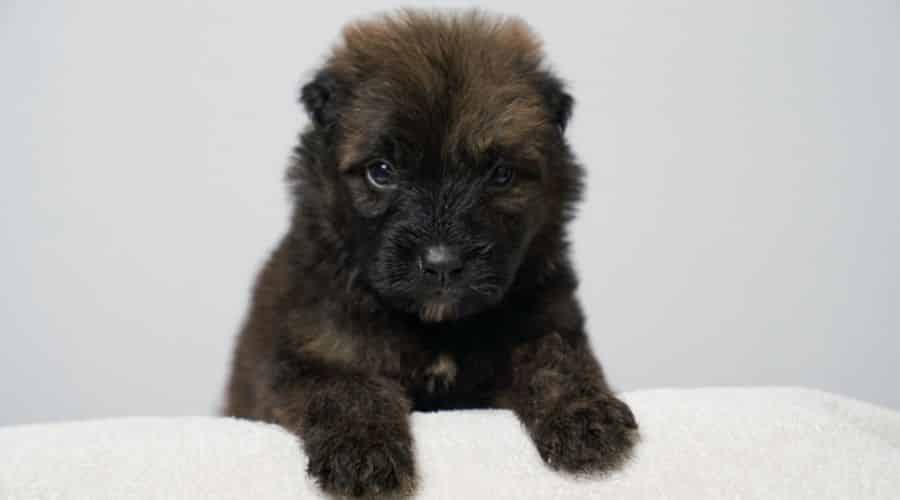
This is a relatively rare dog breed in America, and not every state has a breeder. At least not a reputable one anyway. The AKC’s Bouvier des Flandres breeder page is a great place to begin your research.
The average price for a Bouvier des Flandres puppy from a reputable breeder is around $1,500. But you can expect to pay much more if you are seeking a puppy from an award-winning bloodline or breeder. Always meet the puppies in person and ask for the relevant health checks. A responsible breeder will have many questions about why you think you are a good match for their pups.
Sadly, irresponsible breeders do exist, and it’s your job to recognize them. Otherwise, you risk buying an unhealthy and unsocialized dog. They’ll often price their puppies much lower to entice customers. But be warned that you’ll only spend more in the long run on medical and behavioral bills. Plus, it’s all of our responsibility to keep them out of business for the health of our favorite four-legged nation.
This is a large dog, and with that comes larger bills. Puppies are expensive because not only do you have the initial puppy cost to shell out for. But you also need to equip your home with everything your puppy needs. Larger dogs also eat more, usually have higher insurance and medical bills, and require XXL products. So please ensure you are financially able to care for your dog before welcoming one into your home.
Rescues & Shelters
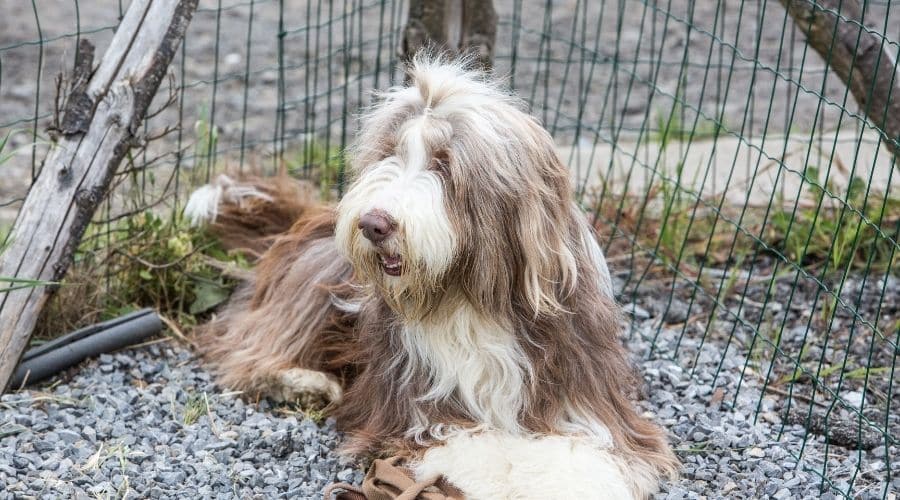
Boisterous puppies are not everyone’s cup of tea, and some families prefer to adopt rather than shop. Head out to your local rescue shelters to see if any are waiting for their forever home. Alternatively, the American Bouvier Rescue League works tirelessly to rehome homeless pups across the country. The cost of adopting a dog is usually lower than buying a young puppy.
As Family Pets
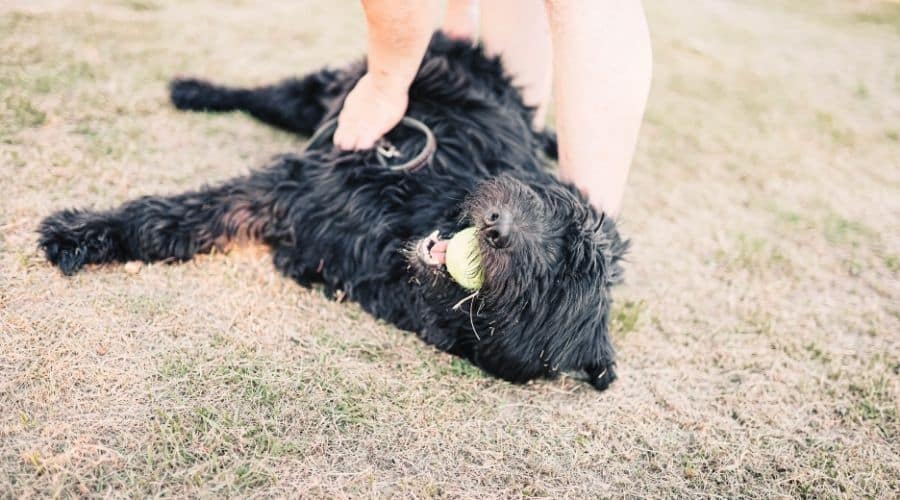
The Bouvier des Flandres are:
- A large to giant-sized dog who takes up a fair bit of room in the family home and on the sofa.
- Traditional herding dogs, which means they have lots of physical and mental energy that needs burning. So, an active lifestyle is a must! They might try to herd children and small animals in the home – but do not let them.
- Aloof with strangers and will protect their family in the face of danger.
- Very affectionate with their humans and have to be involved in the family action.
- Known to be stubborn and headstrong dogs, making training tricky.
- Well-balanced and calm in the home and make great siblings for children and other animals.
- Lots of fun and love to chase balls, meaning you will find a playmate for life in this pooch.
- Hairy and messy, so don’t expect them to be fastidious pets.
Final Thoughts
The Bouvier des Flandres is a mighty pup with lots of love, and attitude, to give. Bouvier lovers claim that they don’t make dogs like this guy anymore! They are hardworking animals capable of almost any task you put to them. And they are eager to please and love to be around their favorite humans. They are well-balanced and lovable dogs who bring joy to their families.
But as you can have learned, these guys are not suited to every family. Families looking to invite a this dog into their life need to be experienced, active, and accepting of messy doggos. If you think that a Bouvier buddy is just what you need, perhaps it’s time to meet some possible forever friends!
